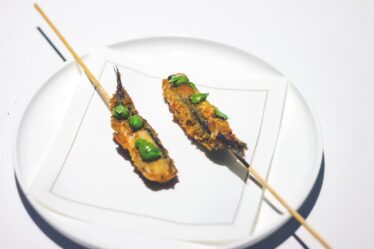
Background Information and Origin
Eggs, such curious little packets of possibility, wouldn't you agree? In the world of sushi, they play an intricate and delicious role, showcased beautifully in tamago (or tamagoyaki). Imagine layered, rolled-up textures of thinly cooked egg, lightly seasoned with dashi and sugar, wrapped up like an elegant spring roll, then sliced into perfect rectangles.
Tamago holds a place on your sushi plate where fish would usually star. It's morning comfort food in Japan, but oh, it's so much more at your sushi dinner. Cooking tamago is like performing a culinary ballet – whisk together those eggs, add dashi stock (or chicken broth in a pinch), and then fry it all up layer by buttery layer in a tamago pan. Surprisingly simple and visually stunning.
Ever tried making sushi rolls and got tired prepping all the fillings? Egg rolls simplify the labor. You prepare a sheet of cooked egg, almost crêpe-like. Think of it as a lazy girl's tamago. Place that on your bamboo mat, spread on some sushi rice, add fillings like shredded carrots or avocado, and roll it all up. A compact flavor bomb.
Oh, and let's talk about the New York-inspired Bacon, Egg, and Cheese Maki Roll. Just imagine – trading in your morning bagel for something that sushi-fies the entire meal. By using tamagoyaki for the eggs, sushi rice for the bread, and crispy bacon, you're bending traditions delightfully. It's all about rolling together simplicity with flavor, ending up with something delicious yet waistline-friendly.
My kids adore figuring out sushi rolls. Rolling sushi is educational entertainment, helping them appreciate different textures and flavors. The pride they feel when that first successful roll comes out is priceless.
The most memorable sushi moment? Enjoying homemade egg sushi rolls on a hot summer day, where every bite was refreshingly cool, comfortingly familiar, and bursting with fresh flavors. The nori sheets, that delicate rice vinegar kick, combined with the silky smoothness of tamagoyaki – a symphony in your mouth.
So next time you think of sushi, don't just replay scenes of fish and seaweed. Think eggs. Think tamago. If you haven't ventured into egg-based sushi territory, it's a yolk worth breaking into.
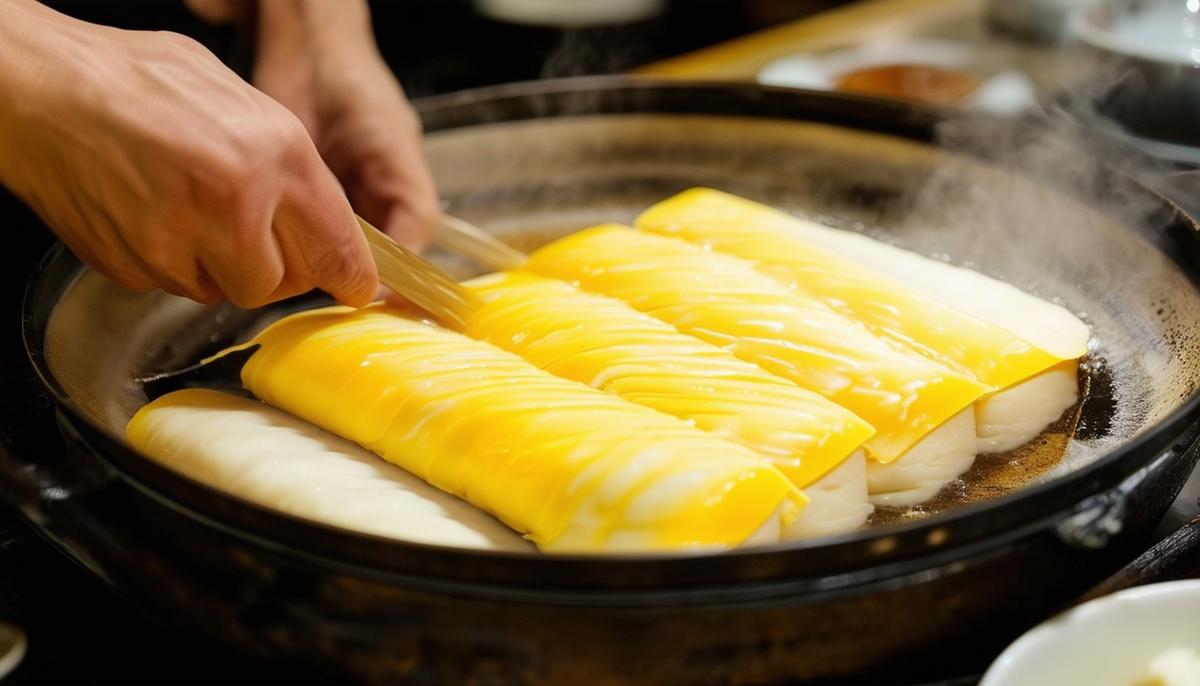
Essential Tips for Rolling Sushi
Now that you're eager to roll some sushi, let's dive into the essentials. You don't need to be a sushi sensei – just some solid tips, a few tricks, and maybe a dollop of patience.
Choose short-grain sushi rice – it's stickier and more suitable for keeping everything together. Once cooked, mix in rice vinegar, sugar, and salt while hot. This concoction balances flavor delightfully. Spread it in a flat dish to cool quickly, then cover with a damp cloth to prevent drying.
Prep your fillings in advance – long, thin veggie strips, ripe avocado sliced lengthwise, cooked proteins like imitation crab or shrimp. Variety in texture makes it interesting!
Place the shiny nori side down on your bamboo mat covered in plastic wrap. Wet your hands to prevent sticking as you spread a thin, even rice layer, leaving about an inch clear at the top for sealing.
- For rolling, place fillings across the rice center horizontally.
- Lift the mat's end nearest you, rolling over the fillings while holding them in place.
- Keep it tight, using your fingers to press down and firm it up.
- When you reach the clear nori strip, moisten it to help it stick, and complete the roll.
If you're worried about uneven slices, use a sharp, water-dipped knife and make decisive cuts with a gentle sawing motion. Wipe the blade between cuts for a clean finish.
Remember, it's all edible art. Your taste buds won't mind if your rolls look a bit rugged. Practice and enjoy the process.
Rolling sushi isn't rocket science. It's a fun, flavorful way to get hands-on with your food. And the outcome? Delicious rolls you can be proud of.
Egg Roll Sushi
Egg Roll Sushi: a culinary mashup that's pure joy for egg roll lovers and sushi enthusiasts. Imagine crispy, savory egg roll goodness wrapped up with the fresh, tangy elements of sushi. It's intuitive, entertaining, and flat-out delicious.
I stumbled upon this gem during a desperate attempt to mix up the usual dinner routine. My kids, ever the food adventurers, were thrilled to join in—rolling sushi turned out to be the perfect family bonding activity.
The beauty lies in its simplicity. You take a veggie-loaded egg roll and wrap it in sushi rice and nori. It's straightforward, requires minimal prep compared to traditional sushi, and gives you that satisfying crunch with every bite. Plus, it's an excellent way to introduce sushi without the raw fish factor.
Get creative – use leftover egg rolls for less waste and more fun. Those crispy, seasoned veggie egg rolls become the star, rolled up in perfectly seasoned sushi rice and nori. It's genius.
Don't stress about perfection. The best part is enjoying the process. Roll it up, slice it, and serve it with soy sauce or sriracha mayo if you're feeling spicy. It's casual, comforting, and gone in a flash.
If you're looking for an easy, fun, and utterly delicious way to elevate your sushi game, try Egg Roll Sushi. It's a game-changer that will find a permanent spot in your mealtime repertoire.

Bacon, Egg, and Cheese Maki Roll
Now for a unique fusion delight: Bacon, Egg, and Cheese Maki Roll. This roll cleverly marries the flavors of a classic American breakfast with the intricacies of Japanese sushi. It captures the essence of a bacon, egg, and cheese sandwich but keeps it lighter, blending comfort and freshness in every bite.
Picture swapping out the heavy bread for delicate sushi rice and incorporating tamagoyaki (a Japanese rolled omelet) for the eggs. The crispy bacon brings the savory punch, and a slice of cheese ties it all up beautifully. This roll is a culinary adventure that puts a fresh twist on your usual breakfast.
One morning, tired of the same old routine, I decided to experiment with breakfast favorites. The Bacon, Egg, and Cheese Maki Roll was born – an instant hit with my family. Holding onto familiar flavors but turning it into an enjoyable sushi experience made it super Instagram-worthy!
Use short-grain sushi rice for that essential sticky texture. Preparing tamagoyaki takes practice, but those beautiful layers are worth it. And don't guesstimate your bacon – bake it to perfection for the ideal crispy texture.
Rolling follows traditional steps: spread seasoned rice on the nori, flip it, layer in your fluffy tamagoyaki, crispy bacon, and cheese. Roll tight using your bamboo mat and slice with a sharp knife. The result? A delicious, fun, and lighter alternative to your typical bacon, egg, and cheese sandwich.
This recipe takes classic morning comfort and gives it a modern twist. Rolling sushi, especially this unique blend, becomes a little celebration in itself. It's perfect for breakfast or brunch and definitely a conversation starter. An unexpected yet delightful way to bring Japan into your morning routine.
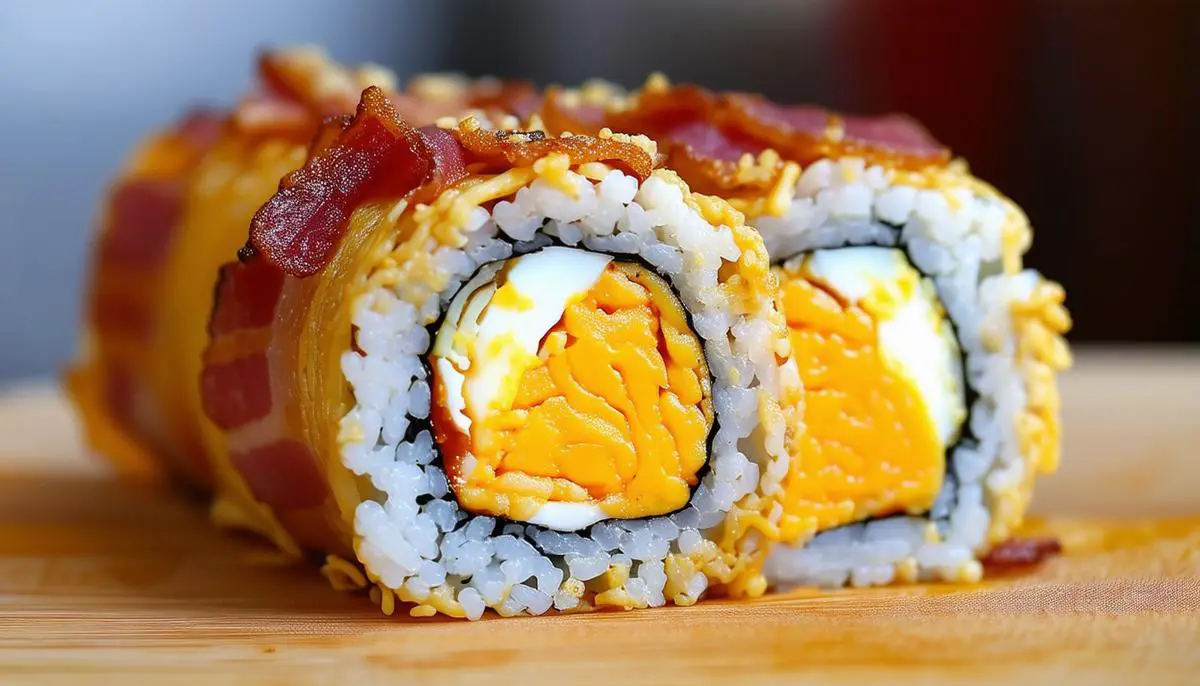
Tamago – The Traditional Japanese Egg Sushi
Tamago, or tamagoyaki, is a quintessential part of Japanese cuisine, often taking pride of place on a sushi platter or as a standalone breakfast dish. This delightful egg preparation involves rolling together thin layers of seasoned, fried eggs into a beautifully cohesive log and then slicing it into rectangular pieces. What truly sets tamago apart is its unique flavor profile—a harmonious blend of sweet and savory that leaves a lasting impression.
Part of tamago's charm lies in its perfect balance of ingredients. The eggs are mixed with sugar, dashi stock (or chicken broth), mirin, and soy sauce, delivering a flavor that's not overly sweet yet subtly savory. The result? A complex and satisfying dish that pairs wonderfully with sushi rice and accompaniments.
Ingredients:
- 6 large eggs
- 2 tablespoons dashi stock (or chicken broth)
- 1 tablespoon mirin
- 1 tablespoon soy sauce
- 1 teaspoon sugar
- 1 tablespoon vegetable oil
Steps:
- In a bowl, beat the eggs thoroughly until no streaks remain.
- Add the dashi stock, mirin, soy sauce, and sugar, and whisk everything together until well combined.
- Heat a traditional tamago pan or a small non-stick pan over medium heat and lightly oil it.
- Pour a thin layer of the egg mixture into the pan, just enough to cover the bottom. Cook until the edges set but the top is still runny.
- Using chopsticks or a spatula, gently roll the cooked egg to one end of the pan.
- Tilt the pan and add a small amount of the remaining egg mixture to the empty side, allowing it to seep under the rolled-up egg.
- Repeat step 6, rolling and adding more egg mixture until all of it is used up.
- Once the tamago log is cooked through, remove it from the pan and let it cool slightly before slicing into individual pieces.
Nutritional Information (per serving, based on 4 servings):
Calories: 165 kcal
Carbohydrates: 3.2g
Protein: 10.2g
Fat: 11.8g
Making tamago at home is easier than it looks. Start by beating the eggs thoroughly until no streaks remain. Add the sugar, dashi stock, mirin, and soy sauce, whisking everything together.
For cooking tools, a traditional tamago pan is ideal but you can improvise with a round nonstick pan. Heat your pan over medium heat and lightly oil it. Pour a thin egg layer, just enough to cover the bottom. Cook until the edges set but the top is still runny. Roll the egg to one end using a spatula or chopsticks, then add more mixture. Lift the rolled-up egg slightly to allow the new mixture to seep underneath. Continue until all the egg mixture is used up.
The secret is in the rolling technique. Roll gently and evenly to avoid tearing the delicate layers. It takes practice, but each successful roll feels like a culinary triumph.
After cooking, let the tamago log cool slightly before slicing into individual pieces to help set the layers and make cutting easier.
Tamago is not just cooking; it's an exploration of texture and flavor that can transform a simple meal into something memorable. Whether for sushi, a bento box, or a delicious snack, tamago brings Japanese elegance to your table. Enjoy the process, savor the results, and remember—every perfect slice tells a story of your growing skills.
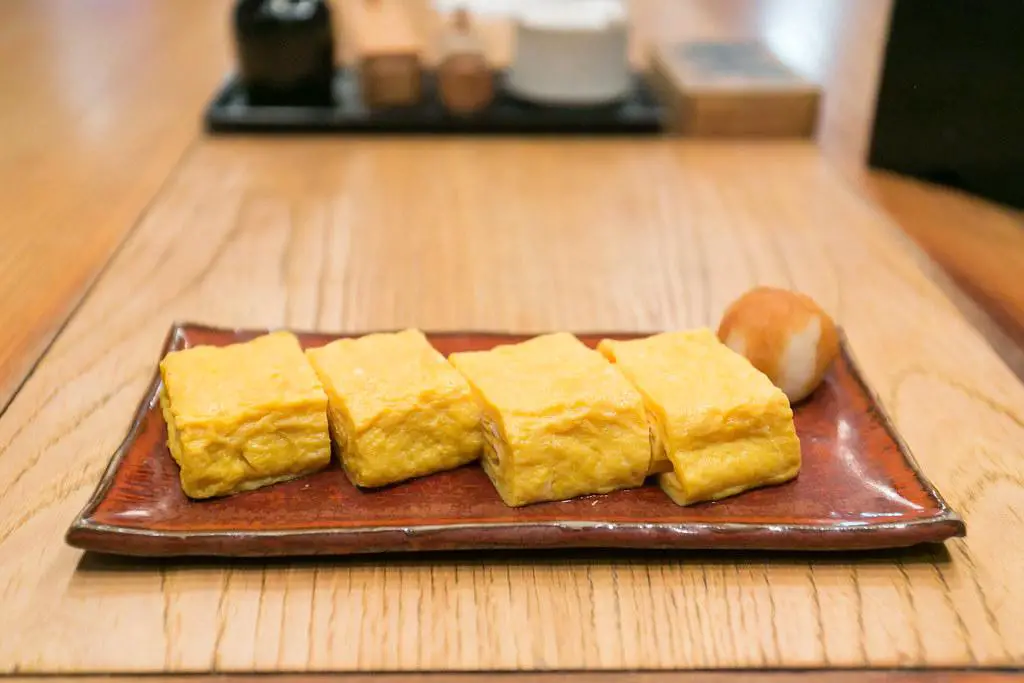
Recipe: Egg Roll Sushi
Ingredients:
- 2 cups short-grain or sushi rice
- 2 cups water
- ¼ cup rice vinegar
- 2 tablespoons sugar
- 1 tablespoon kosher salt
- 4 Van's Kitchen Vegetable Egg Rolls
- 4 sheets nori
Instructions:
- Rinse and drain the rice under cool running water 2 to 3 times until the water is clear.
- Place the rice in a small saucepan with water. Bring to a boil over high heat, then reduce heat to the lowest setting, cover, and cook for 15 minutes. Remove from heat and let it rest.
- While the rice cooks, mix the rice vinegar, sugar, and salt in a bowl until the sugar dissolves.
- Once the rice is done, transfer it to a large bowl and pour the vinegar mixture over it. Gently fold to mix, then cover with a damp cloth and let cool.
- Preheat the oven to 400°F. Place the egg rolls on a baking sheet and bake for 10 minutes, or until crispy and the internal temperature is 165°F.
- Lay a clean dish towel or bamboo mat covered in plastic wrap on the countertop.
- Place a sheet of nori, shiny side down, on the plastic wrap.
- Scoop 1½ cups of the prepared sushi rice on the nori. Use wet hands to spread the rice evenly, leaving a 1-inch border at the top.
- Place a cooked egg roll on the lower third of the nori.
- Use the towel and plastic wrap to firmly roll the sushi roll. Dip a finger in water and run it along the edge of the nori to seal as you form the roll, pressing firmly.
- Use a serrated knife to slice the roll into 6 pieces; start by cutting the roll in half, then cut each half in thirds.
- Repeat with the remaining ingredients. Serve with soy sauce.
Nutritional information (per serving, based on 4 servings):
- Calories: 380
- Carbohydrates: 68g
- Protein: 6g
- Fat: 8g
- Sodium: 1070mg
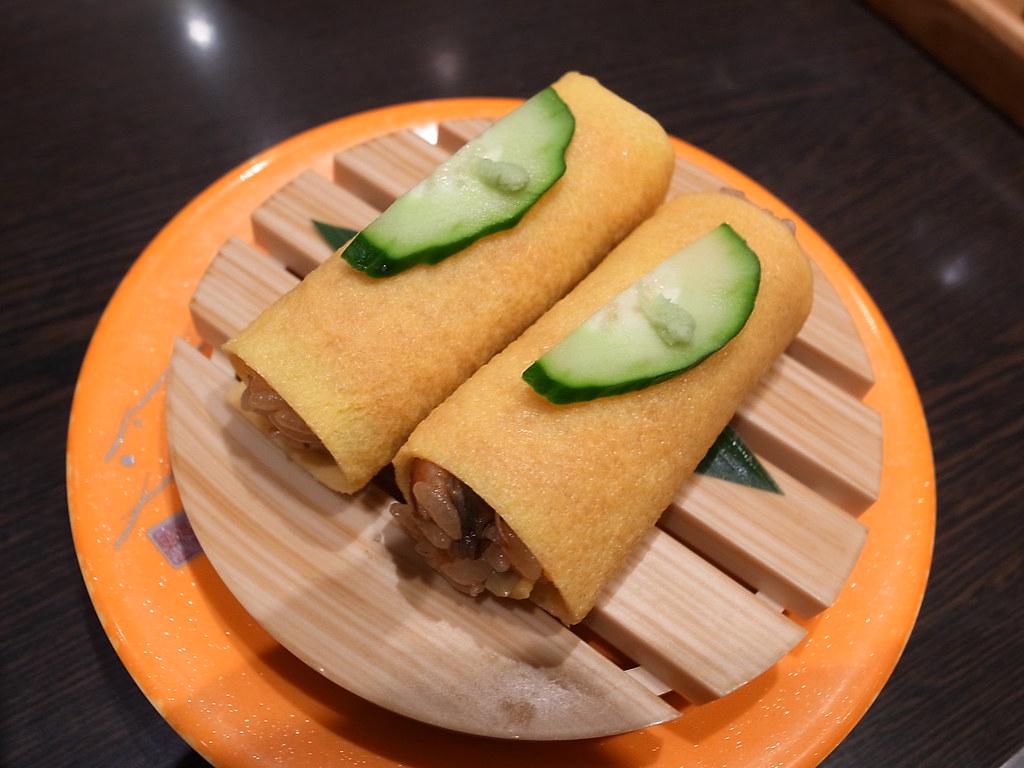
Recipe: Bacon, Egg, and Cheese Maki Roll
Ingredients:
- 2 cups sushi rice
- 2 cups water
- 2 tablespoons rice vinegar
- 1 tablespoon sugar
- 1 teaspoon salt
- 4 large eggs
- 2 tablespoons dashi stock (or use chicken broth as a substitute)
- 1 teaspoon soy sauce
- Vegetable oil (for cooking the eggs)
- 4 slices crispy cooked bacon
- 4 slices cheese
- 4 sheets nori
Instructions:
- Rinse the sushi rice under cool running water until the water runs clear. Place the rice and water in a rice cooker or a small saucepan. Bring to a boil, then reduce heat to the lowest setting, cover, and cook for 15 minutes. Remove from heat and let it sit covered for an additional 10 minutes.
- While the rice is cooking, mix the rice vinegar, sugar, and salt until the sugar dissolves.
- Transfer the cooked rice to a large bowl and gently fold in the vinegar mixture. Allow it to cool down to room temperature with a damp cloth covering the bowl.
- For the tamagoyaki, beat the eggs in a bowl. Mix in the dashi stock and soy sauce.
- Heat a tamago pan or nonstick pan over medium heat and lightly grease it with vegetable oil. Pour in a thin layer of the egg mixture, enough to cover the bottom of the pan. Once the edges set and the top is still slightly runny, roll the egg to one side using chopsticks or a spatula.
- Add more egg mixture, lift the rolled egg slightly to let the new mixture flow underneath, and repeat the rolling process until all the egg mixture is used. Allow the tamagoyaki to cool slightly and then cut into logs.
- Preheat your oven to 400°F and cook the bacon until crispy, or use a frying pan. Drain on paper towels.
- Lay a sheet of nori on a bamboo mat covered with plastic wrap. Wet your hands and spread a thin, even layer of sushi rice over the nori, leaving a 1-inch border at the top.
- Flip the nori over so the rice faces down. Lay a slice of cheese, a bacon strip, and a tamagoyaki log across the center.
- Roll the sushi tightly using the bamboo mat, pressing firmly to keep it compact. Wet the edge of the nori with a bit of water to seal the roll.
- Use a sharp knife dipped in water to slice the roll into 6-8 pieces. Ensure the knife stays clean by wiping it with a damp cloth between slices.
- Serve the rolls with optional garnishes like sriracha mayo or soy sauce for dipping.
Nutritional information (per serving, based on 4 servings):
- Calories: 450
- Carbohydrates: 68g
- Protein: 18g
- Fat: 16g
- Sodium: 1290mg
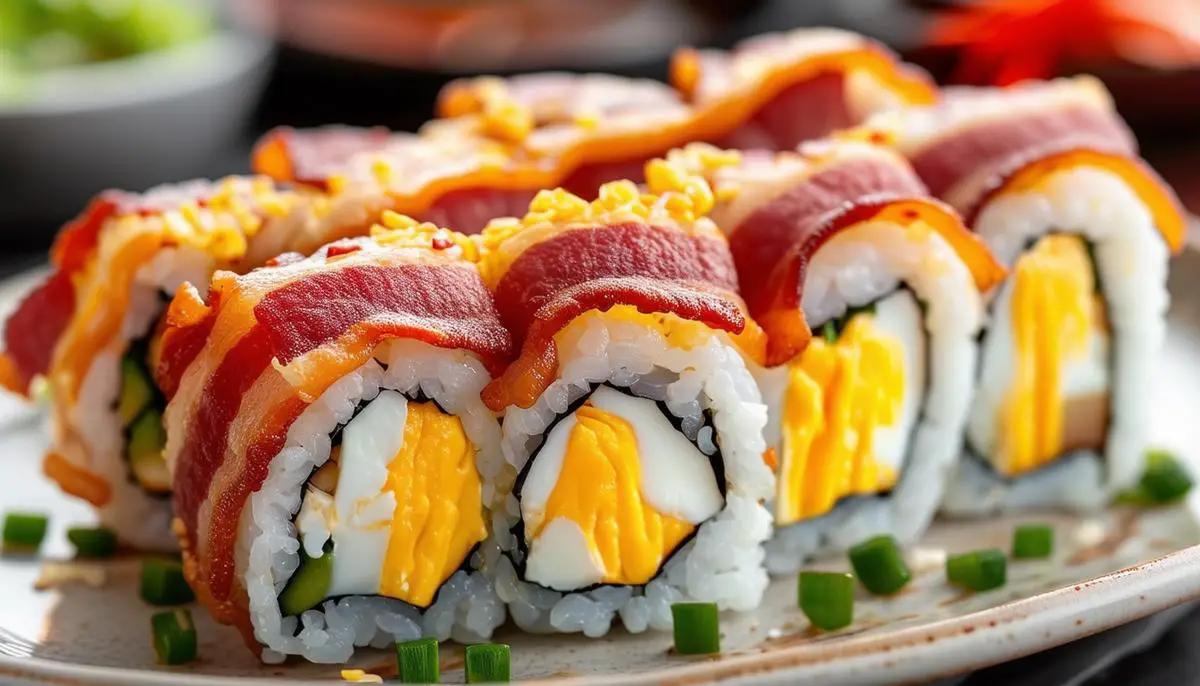
Recipe: Tamago
Ingredients:
- 4 large eggs
- 2 tablespoons dashi stock (or chicken broth)
- 1 tablespoon sugar
- 1 teaspoon mirin
- 1 teaspoon soy sauce
- Vegetable oil (for cooking)
Instructions:
- Prepare the Egg Mixture:
In a bowl, beat the eggs thoroughly. Ensure no visible egg white streaks are left. Mix in the dashi stock, sugar, mirin, and soy sauce until fully incorporated.
- Prepare the Pan:
Lightly oil a tamago pan (preferred) or a small nonstick round pan and heat it over medium heat. Make sure the pan is hot enough to set the egg mixture immediately but not too hot to burn it.
- Cooking the Tamago:
Pour a thin layer of the egg mixture into the pan, just enough to coat the bottom. Once the edges set and the top is slightly runny, carefully roll the egg to one side of the pan using a spatula or chopsticks. Add more egg mixture, lifting the rolled egg slightly to allow the new mixture to flow underneath. Once the edges set, roll it over the previously cooked egg layer. Repeat until all the egg mixture is used. With each new layer, ensure the pan is still well-oiled to prevent sticking.
- Cooling and Slicing:
After cooking, let the tamago log cool slightly in the pan. Transfer it to a cutting board and slice into rectangular pieces about 1-2 inches wide.
Tips for Perfecting the Rolling Technique:
- Use a tamago pan if available, as its rectangular shape helps achieve even layers.
- Roll gently and evenly to avoid tearing the delicate egg layers.
- Keep the layers thin to ensure the tamago cooks evenly and rolls up neatly.
- Allow the egg mixture to set just enough before rolling, but keep the top slightly runny for seamless rolling.
Suggestions for Serving:
- Serve tamago slices over sushi rice for a simple yet elegant sushi piece.
- Include tamago slices in bento boxes for a sweet and savory protein option.
- Enjoy tamago as a standalone snack or breakfast item.
By mastering these steps, you can create perfectly layered tamago, adding a touch of Japanese tradition to your culinary repertoire.
Nutritional information (per serving, based on 4 servings):
- Calories: 140
- Carbohydrates: 4g
- Protein: 8g
- Fat: 9g
- Sodium: 340mg



